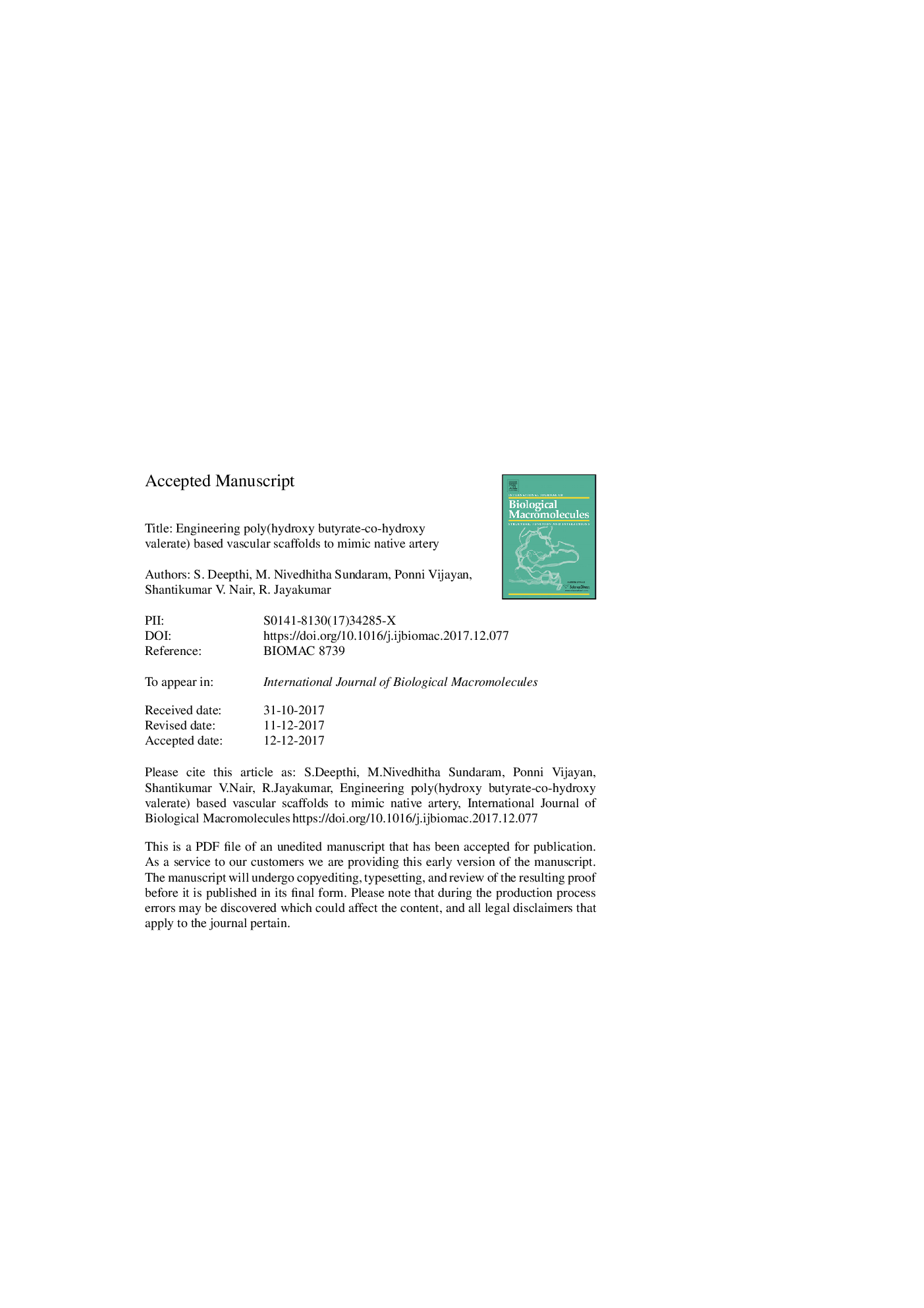| کد مقاله | کد نشریه | سال انتشار | مقاله انگلیسی | نسخه تمام متن |
|---|---|---|---|---|
| 8328155 | 1540205 | 2018 | 37 صفحه PDF | دانلود رایگان |
عنوان انگلیسی مقاله ISI
Engineering poly(hydroxy butyrate-co-hydroxy valerate) based vascular scaffolds to mimic native artery
ترجمه فارسی عنوان
مهندسی پلی (هیدروکسی بوتیث کوه هیدروکسی والراته) مبتنی بر داربست های عروقی برای تقلید شریان بومی
دانلود مقاله + سفارش ترجمه
دانلود مقاله ISI انگلیسی
رایگان برای ایرانیان
موضوعات مرتبط
علوم زیستی و بیوفناوری
بیوشیمی، ژنتیک و زیست شناسی مولکولی
زیست شیمی
چکیده انگلیسی
Electrospun tri-layered fibrous scaffold incorporating VEGF and Platelet Factor Concentrate (PFC) in multiple layers having different layer architectures was designed to mimic native artery. The scaffold consisted of longitudinally aligned poly(hydroxy butyrate-co-hydroxy valerate) (PHBV) and poly(vinyl alcohol) (PVA) nanofibers (inner layer), radially aligned PHBV-elastin nanofibers (middle layer) to provide the bi-directional alignment and combination of longitudinally aligned PHBV-elastin and random PHBV/PVA multiscale fibers (peripheral layer). Tubular constructs of diameter <6â¯mm were developed. The developed electrospun fibers were characterised by Scanning Electron Microscope (SEM), Fourier Transform Infrared Spectroscopy and Tensile tests. Further the burst strength, compliance and stiffness index of tri-layered tubular scaffold was evaluated. SEM images of fibrous layers showed the typical longitudinal and radial alignment of fibers in the tubular construct. SEM images showed that the prepared PHBV nanofibers were in the range of 500-800â¯nm and PHBV microfibers were of 1-2â¯Î¼m in diameter in the tri-layered electrospun membrane. PVA nanofibers were of size 200-250â¯nm. The tensile strength, percentage compliance and stiffness index of tri-layered membrane was in accordance with that of native small blood vessels. The developed tri-layered membrane was blood compatible, with hemolysis degree 0.85â¯Â±â¯0.21% and did not activate platelets. Controlled release of VEGF and PFC was observed from the scaffold. The biocompatibility of the tri-layered scaffold was evaluated using HUVECs, SMCs and MSCs and SMCs infiltration from the outer layer was also evaluated. Specific protein expression for the HUVECs and SMCs was evaluated by flow cytometry and immunocytochemistry. HUVECs and SMCs exhibited good elongation and alignment along the direction of fibers and was found to maintain its CD31, VE-Cadherin and αSMA expression respectively. The results highlight the importance of bi-directional fiber alignment on the tri-layered electrospun scaffold as a suitable architectural prototype for vascular scaffolds to mimic the native arteries.
ناشر
Database: Elsevier - ScienceDirect (ساینس دایرکت)
Journal: International Journal of Biological Macromolecules - Volume 109, 1 April 2018, Pages 85-98
Journal: International Journal of Biological Macromolecules - Volume 109, 1 April 2018, Pages 85-98
نویسندگان
S. Deepthi, M. Nivedhitha Sundaram, Ponni Vijayan, Shantikumar V. Nair, R. Jayakumar,
